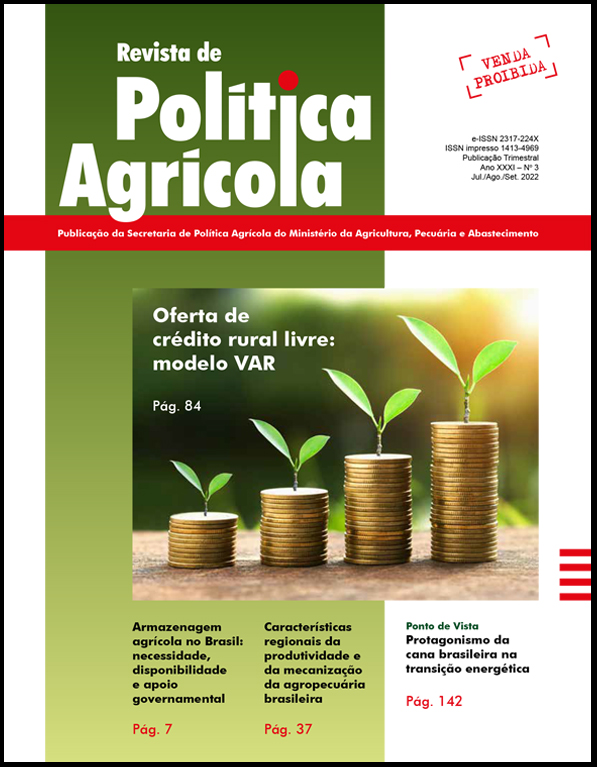Evolution of the agricultural efficiency in the Brazilian Amazon
Keywords:
Data envelopment analysis, agricultural census, cattle, logit, soybean.Abstract
The objective of this study was to determine the agricultural efficiency of Brazilian Amazon municipalities between 2006 and 2017, by the analysis of the variables that impact such agricultural efficiency. From the data of the agricultural censuses of 2006 and 2017 (Censos Agropecuários de 2006 e 2007), it was possible to estimate the technical efficiency of each municipality, using the data envelopment analysis (DEA), and to determine the effect of selected variables over the odds of ratio of efficiency using a logit model. The results showed that, over one decade, the majority of municipalities efficiency grew. The agricultural production value raised 8.54 times more than the increase of agricultural and pasture areas, which is a consequence of the expansion of intensive systems in the rural properties. Cattle raising was inversely correlated with efficiency. The agriculture mainly devoted to commodities, with intensive machinery use, favored the efficiency. Therefore, the public policies should prioritize the development of intensive systems in the Amazon, including measures for a better distribution of rural credit, technology and knowledge diffusion, as well as infrastructure to support the rural production.Downloads
Published
2022-10-03
How to Cite
Rodrigues, M., Junior, W. C. A., & Silva, D. C. C. (2022). Evolution of the agricultural efficiency in the Brazilian Amazon. Revista De Política Agrícola, 31(3), 130. Retrieved from https://rpa.sede.embrapa.br/RPA/article/view/1752
Issue
Section
Artigos Científicos


